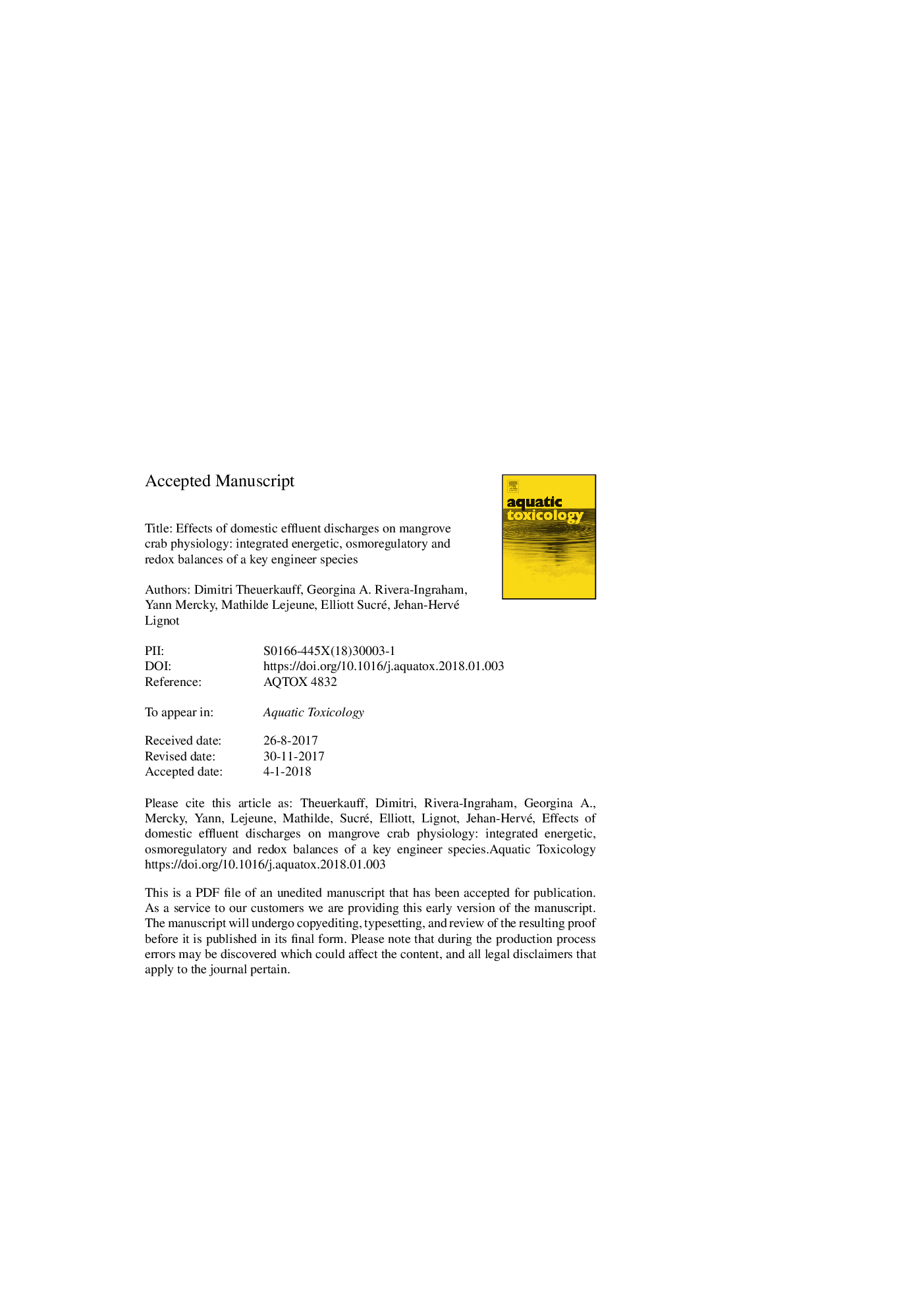| کد مقاله | کد نشریه | سال انتشار | مقاله انگلیسی | نسخه تمام متن |
|---|---|---|---|---|
| 8883839 | 1625909 | 2018 | 40 صفحه PDF | دانلود رایگان |
عنوان انگلیسی مقاله ISI
Effects of domestic effluent discharges on mangrove crab physiology: Integrated energetic, osmoregulatory and redox balances of a key engineer species
ترجمه فارسی عنوان
اثرات تخلیه فاضلاب داخلی در فیزیولوژی خرچنگ مانگرو: توازن انرژی، مقیاس اسمز معکوس و بازتوانی یک نوع مهندس
دانلود مقاله + سفارش ترجمه
دانلود مقاله ISI انگلیسی
رایگان برای ایرانیان
کلمات کلیدی
موضوعات مرتبط
علوم زیستی و بیوفناوری
علوم کشاورزی و بیولوژیک
علوم آبزیان
چکیده انگلیسی
Mangroves are increasingly used as biofiltering systems of (pre-treated) domestic effluents. However, these wastewater discharges may affect local macrofauna. This laboratory study investigates the effects of wastewater exposure on the mangrove spider crab Neosarmatium meinerti, a key engineering species which is known to be affected by waste waters in effluent-impacted areas. These effects were quantified by monitoring biological markers of physiological state, namely oxygen consumption, the branchial cavity ventilation rate, gill physiology and morphology, and osmoregulatory and redox balance. Adults acclimated to clean seawater (SW, 32â¯ppt) and freshwater (FW, â¼0â¯ppt) were compared to crabs exposed to wastewater for 5â¯h (WW, â¼0â¯ppt). Spider crabs exposed to WW increased their ventilation and whole-animal respiration rates by 2- and 3-fold respectively, while isolated gill respiration increased in the animals exposed to FW (from 0.5 to 2.3 and 1.1â¯nmol O2 minâ1â¯mgâ¯DWâ1 for anterior and posterior gills, respectively) but was not modified in WW-exposed individuals. WW exposure also impaired crab osmoregulatory capacity; an 80â¯mOsmâ¯kgâ1 decrease was observed compared to FW, likely due to decreased branchial NKA activity. ROS production (DCF fluorescence in hemolymph), antioxidant defenses (superoxide dismutase and catalase activities) and oxidative damage (malondialdehyde concentration) responses varied according to animal gender. Overall, this study demonstrates that specific physiological parameters must be considered when focusing on crabs with bimodal breathing capacities. We conclude that spider crabs exposed to WW face osmoregulatory imbalances due to functional and morphological gill remodeling, which must rapidly exhaust energy reserves. These physiological disruptions could explain the ecological changes observed in the field.
ناشر
Database: Elsevier - ScienceDirect (ساینس دایرکت)
Journal: Aquatic Toxicology - Volume 196, March 2018, Pages 90-103
Journal: Aquatic Toxicology - Volume 196, March 2018, Pages 90-103
نویسندگان
Dimitri Theuerkauff, Georgina A. Rivera-Ingraham, Yann Mercky, Mathilde Lejeune, Jehan-Hervé Lignot, Elliott Sucré,
